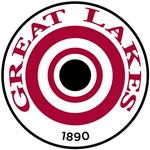First quarter net income of $33.4 million
First quarter Adjusted EBITDA of $60.1 million
Dredging backlog of $1 billion at March 31, 2025
HOUSTON, May 06, 2025 (GLOBE NEWSWIRE) -- Great Lakes Dredge & Dock Corporation (“Great Lakes” or the “Company”) (Nasdaq: GLDD), the largest provider of dredging services in the United States, today reported financial results for the first quarter ended March 31, 2025.
First Quarter 2025 Highlights
- Revenue was $242.9 million
- Total operating income was $49.9 million
- Net income was $33.4 million
- Adjusted EBITDA was $60.1 million
- Backlog as of March 31, 2025, was $1.0 billion
Management Commentary
Lasse Petterson, President and Chief Executive Officer, commented, “Great Lakes had an great first quarter, with strong project performance and high utilization as all of our active dredges were operational. We ended the quarter with revenue of $242.9 million, net income of $33.4 million, and adjusted EBITDA of $60.1 million. Our substantial dredging backlog stood at approximately $1 billion as of the end of the first quarter, with an additional $265.3 million in low bids and options pending award, providing revenue visibility for the remainder of 2025 and well into 2026. Capital and coastal protection projects accounted for 95% of our backlog, which typically yield higher margins.
Dredging for the private companies in the Liquefied Natural Gas (“LNG”) market is gaining momentum. As a result, post-quarter end, we received notice to proceed for dredging work on the Woodside Louisiana LNG project. This project will be included in our second quarter 2025 backlog along with two options that will be included in our second quarter 2025 options pending award. Dredging is expected to commence early 2026. Included in our current backlog are two other LNG projects awarded in 2023, the Port Arthur LNG Phase 1 Project and the Brownsville Ship Channel Project for the Next Decade Corporation’s Rio Grande LNG Project, the latter representing the largest project in the Company’s history. Dredging operations for both of these capital projects commenced in the third quarter of 2024 and are ongoing.
In March, our board of directors approved a $50 million share repurchase program, as we believed our share price did not appropriately reflect the Company’s financial performance and long-term outlook. As of April 30, 2025, we have repurchased 1.2 million shares under the program for a total spend of $10.4 million.
In addition, on May 2, 2025, we executed an amendment to our Revolving Credit Facility, increasing the size from $300 million to $330 million, further enhancing our liquidity. All other terms remained the same.
We continue to make progress on our new build program with our newest hopper dredge, the Amelia Island, expected to be delivered in the third quarter of this year will immediately go to work when she leaves the shipyard. The Amelia Island and her sister ship, the Galveston Island, which was delivered in early 2024, will primarily work on projects aimed at the redevelopment and enhancement of our shorelines, which are consistently impacted by storms, and rising sea.
The Acadia, the first U.S.-flagged Jones Act compliant subsea rock installation vessel is also currently under construction. The target markets for the Acadia include domestic and international offshore wind projects and projects that protect critical subsea infrastructure such as oil and gas pipelines and power and telecommunication cables.
Following a strong 2024, the Company started 2025 with outstanding momentum, delivering an exceptional first quarter. Driven by a modernized fleet, superior project execution, and a robust backlog, we believe that we are well positioned for the future.”
Operational Update
First Quarter 2025
- Revenue was $242.9 million, an increase of $44.2 million from the first quarter of 2024. The higher revenue in the first quarter of 2025 was due primarily to higher capital and coastal protection project revenue as compared to the same period in the first quarter last year, offset by lower maintenance project revenue.
- Gross profit was $69.5 million, an improvement of $23.9 million compared to the gross profit from the first quarter of 2024 and gross margin percentage increased to 28.6% in the first quarter of 2025 from 22.9% in the first quarter of 2024 due to improved utilization and project performance.
- Operating income was $49.9 million, which is up from $31.5 million in the prior year first quarter. The year over year increase is driven by higher gross profit partially offset by an increase in general and administrative expenses mostly from higher incentive compensation due to the higher current year first quarter results.
- Net income for the quarter was $33.4 million, which is a $12.4 million increase compared to net income of $21.0 million in the prior year first quarter. The increase is mostly driven by improved operating results partially offset by an increase in income tax provision.
Balance Sheet, Dredging Backlog & Capital Expenditures
- At March 31, 2025, the Company had $11.3 million in cash and cash equivalents and total long-term debt of $413.9 million with nothing drawn on our $300 million revolver.
- At March 31, 2025, the Company had $1.0 billion in dredging backlog as compared to $1.2 billion at December 31, 2024. March 31, 2025, dredging backlog does not include approximately $265.3 million of low bids and options pending award.
- Total capital expenditures for the first quarter 2025 were $11.4 million including $3.9 million for the construction of the Acadia, $2.0 million for the Amelia Island, and $5.5 million for maintenance and growth.
Market Update
The Administration continues to demonstrate strong and consistent support for the dredging industry. The U.S. Army Corps of Engineers (the “Corps”) is operating in fiscal year 2025 under a continuing resolution, enacted on March 15, 2025, which sustains the funding levels established in the prior fiscal year’s record-setting budget through September 30, 2025. Our $1 billion project backlog and the inclusion of resources from the 2023 Disaster Relief Supplemental Appropriations should enable us to continue to deliver on a very busy 2025, with sustained execution capacity and expected project visibility extending well into 2026.
The Water Resources Development Act (“WRDA”) is reauthorized biannually and provides funding for the Corps’ projects focused on flood protection, dredging, and ecosystem restoration. WRDA 2022 authorized the projects for the deepening of shipping channels in New York and New Jersey to 55 feet, as well as for the Coastal Texas Protection and Restoration Program, which is designed to safeguard the Texas Gulf Coast from hurricanes. On January 4, 2025, WRDA 2024 was signed into law, authorizing numerous capital investments and initiatives aimed at enhancing flood protection, strengthening coastal resilience, and advancing ecosystem restoration efforts.
On April 16, 2025, the Bureau of Ocean Energy Management issued a temporary pause for Equinor’s Empire Wind I project which currently is included in our offshore energy backlog. While the duration and impact of the temporary pause to the project are unknown at this time, we remain in regular contact with Equinor.
Recognizing early signs of potential delays to projects in the U.S. offshore wind market, we proactively expanded our strategic target markets for the Acadia to include oil and gas pipeline and power and telecommunications cable protection, as well as international offshore wind. These additional markets helped pave the way for the expansion of our offshore wind division into the broader range of offerings that we call Offshore Energy. This expansion is driven by our assessment of a global undersupply of rock placement vessels. Accordingly, we are actively pursuing opportunities across these sectors, which are anticipated to provide sustained utilization for the Acadia into the foreseeable future.
Conference Call Information
The Company will conduct a quarterly conference call, which will be held on Tuesday, May 6, 2025, at 9:00 a.m. C.S.T (10:00 a.m. E.S.T.). Investors and analysts are encouraged to pre-register for the conference call by using the link below. Participants who pre-register will be given a unique PIN to gain immediate access to the call. Pre-registration may be completed at any time up to the call start time.
To pre-register, go to https://register-conf.media-server.com/register/BI0a4a525f53334397beb24e7cfaae5758
The live call and replay can also be heard at https://edge.media-server.com/mmc/p/c7ruzbn3 or on the Company’s website, www.gldd.com, under Events on the Investor Relations page. A copy of the press release will be available on the Company’s website.
Use of Non-GAAP Measures
Adjusted EBITDA, as provided herein, represents net income from continuing operations, adjusted for net interest expense, income taxes, depreciation and amortization expense, debt extinguishment, accelerated maintenance expense for new international deployments, goodwill or asset impairments and gains on bargain purchase acquisitions. Adjusted EBITDA is not a measure derived in accordance with GAAP. The Company presents Adjusted EBITDA as an additional measure by which to evaluate the Company's operating trends. The Company believes that Adjusted EBITDA is a measure frequently used to evaluate the performance of companies with substantial leverage and that the Company's primary stakeholders (i.e., its stockholders, bondholders and banks) use Adjusted EBITDA to evaluate the Company's period to period performance. Additionally, management believes that Adjusted EBITDA provides a transparent measure of the Company’s recurring operating performance and allows management to readily view operating trends, perform analytical comparisons and identify strategies to improve operating performance. For this reason, the Company uses a measure based upon Adjusted EBITDA to assess performance for purposes of determining compensation under the Company's incentive plan. Adjusted EBITDA should not be considered an alternative to, or more meaningful than, amounts determined in accordance with GAAP including: (a) net income as an indicator of operating performance or (b) cash flows from operations as a measure of liquidity. As such, the Company's use of Adjusted EBITDA, instead of a GAAP measure, has limitations as an analytical tool, including the inability to determine profitability or liquidity due to the exclusion of accelerated maintenance expense for new international deployments, goodwill or asset impairments, gains on bargain purchase acquisitions, net interest expense and income tax expense and the associated significant cash requirements and the exclusion of depreciation and amortization, which represent significant and unavoidable operating costs given the level of indebtedness and capital expenditures needed to maintain the Company's business. For these reasons, the Company uses net income to measure the Company's operating performance and uses Adjusted EBITDA only as a supplement. Adjusted EBITDA is reconciled to net income in the table of financial results. For further explanation, please refer to the Company's SEC filings.
The Company
Great Lakes Dredge & Dock Corporation is the largest provider of dredging services in the United States, which is complemented with a long history of performing significant international projects. In addition, Great Lakes is fully engaged in expanding its core business into the offshore energy industry. The Company employs experienced civil, ocean and mechanical engineering staff in its estimating, production and project management functions. In its over 135-year history, the Company has never failed to complete a marine project. Great Lakes owns and operates the largest and most diverse fleet in the U.S. dredging industry, comprised of approximately 200 specialized vessels. Great Lakes has a disciplined training program for engineers that ensures experienced-based performance as they advance through Company operations. The Company’s Incident-and Injury-Free® (IIF®) safety management program is integrated into all aspects of the Company’s culture. The Company’s commitment to the IIF® culture promotes a work environment where employee safety is paramount.
Cautionary Note Regarding Forward-Looking Statements
Certain statements in this press release may constitute “forward-looking” statements, as defined in Section 21E of the Securities Exchange Act of 1934 (the “Exchange Act”), the Private Securities Litigation Reform Act of 1995 (the “PSLRA”) or in releases made by the Securities and Exchange Commission (the “SEC”), all as may be amended from time to time. Such forward-looking statements involve known and unknown risks, uncertainties and other important factors that could cause the actual results, performance or achievements of Great Lakes and its subsidiaries, or industry results, to differ materially from any future results, performance or achievements expressed or implied by such forward-looking statements. Statements that are not historical fact are forward-looking statements. Forward-looking statements can be identified by, among other things, the use of forward-looking language, such as the words “plan,” “believe,” “expect,” “anticipate,” “intend,” “estimate,” “project,” “may,” “would,” “could,” “should,” “seeks,” “are optimistic,” “commitment to” or “scheduled to,” or other similar words, or the negative of these terms or other variations are being made pursuant to the Exchange Act and the PSLRA with the intention of obtaining of these terms or comparable language, or by discussion of strategy or intentions. These cautionary statements have the benefit of the “safe harbor” provisions of such laws. Great Lakes cautions investors that any forward-looking statements made by Great Lakes are not guarantees or indicative of future performance. Important assumptions and other important factors that could cause actual results to differ materially from those forward-looking statements with respect to Great Lakes include, but are not limited to: a reduction in government funding for dredging and other contracts, or government cancellation of such contracts, or the inability of the Corps to let bids to market; our ability to qualify as an eligible bidder under government contract criteria and to compete successfully against other qualified bidders in order to obtain government dredging and other contracts; the political environment and governmental fiscal and monetary policies; cost over-runs, operating cost inflation and potential claims for liquidated damages, particularly with respect to our fixed price contracts; the timing of our performance on contracts and new contracts being awarded to us; significant liabilities that could be imposed were we to fail to comply with government contracting regulations; project delays related to the increasingly negative impacts of climate change or other unusual, non-historical weather patterns; costs necessary to operate and maintain our existing vessels and the construction of new vessels, including with respect to changes in applicable regulations or standards; equipment or mechanical failures; pandemic, epidemic or outbreak of an infectious disease; disruptions to our supply chain for procurement of new vessel build materials or maintenance on our existing vessels; capital and operational costs due to environmental regulations; market and regulatory responses to climate change, including proposed regulations concerning emissions reporting and future emissions reduction goals; contract penalties for any projects that are completed late; force majeure events, including natural disasters, war and terrorists’ actions; changes in the amount of our estimated backlog; significant negative changes attributable to large, single customer contracts; our ability to obtain financing for the construction of new vessels, including our new offshore energy vessel; our ability to secure contracts to utilize our new offshore energy vessel; unforeseen delays and cost overruns related to the construction of our new vessels; any failure to comply with the Jones Act provisions on coastwise trade, or if those provisions were modified, repealed or interpreted differently; our ability to comply with anti-discrimination laws, including those pertaining to diversity, equity and inclusion programs; fluctuations in fuel prices, particularly given our dependence on petroleum-based products; impacts of nationwide inflation on procurement of new build and vessel maintenance materials; our ability to obtain bonding or letters of credit and risks associated with draws by the surety on outstanding bonds or calls by the beneficiary on outstanding letters of credit; acquisition integration and consolidation, including transaction expenses, unexpected liabilities and operational challenges and risks; divestitures and discontinued operations, including retained liabilities from businesses that we sell or discontinue; potential penalties and reputational damage as a result of legal and regulatory proceedings; any liabilities imposed on us for the obligations of joint ventures, and similar arrangements and subcontractors; increased costs of certain material used in our operations due to newly imposed tariffs; unionized labor force work stoppages; any liabilities for job-related claims under federal law, which does not provide for the liability limitations typically present under state law; operational hazards, including any liabilities or losses relating to personal or property damage resulting from our operations; our substantial amount of indebtedness, which makes us more vulnerable to adverse economic and competitive conditions; restrictions on the operation of our business imposed by financing terms and covenants; impacts of adverse capital and credit market conditions on our ability to meet liquidity needs and access capital; limitations on our hedging strategy imposed by statutory and regulatory requirements for derivative transactions; foreign exchange risks, in particular, related to the new offshore energy vessel build; losses attributable to our investments in privately financed projects; restrictions on foreign ownership of our common stock; restrictions imposed by Delaware law and our charter on takeover transactions that stockholders may consider to be favorable; restrictions on our ability to declare dividends imposed by our financing agreements or Delaware law; significant fluctuations in the market price of our common stock, which may make it difficult for holders to resell our common stock when they want or at prices that they find attractive; changes in previously recorded net revenue and profit as a result of the significant estimates made in connection with our methods of accounting for recognized revenue; maintaining an adequate level of insurance coverage; our ability to find, attract and retain key personnel and skilled labor; disruptions, failures, data corruptions, cyber-based attacks or security breaches of the information technology systems on which we rely to conduct our business; and impairments of our goodwill or other intangible assets. For additional information on these and other risks and uncertainties, please see Item 1A. “Risk Factors” of Great Lakes' Annual Report on our most recent Form 10-K, and in other securities filings by Great Lakes with the SEC.
Although Great Lakes believes that its plans, intentions and expectations reflected in or suggested by such forward looking statements are reasonable, actual results could differ materially from a projection or assumption in any forward-looking statements. Great Lakes' future financial condition and results of operations, as well as any forward-looking statements, are subject to change and inherent risks and uncertainties. The forward-looking statements contained in this press release are made only as of the date hereof and Great Lakes does not have or undertake any obligation to update or revise any forward-looking statements whether as a result of new information, subsequent events or otherwise, unless otherwise required by law.
| Condensed Consolidated Statements of Operations | |||||||
| (Unaudited and in thousands, except per share amounts) | |||||||
| Three Months Ended | |||||||
| March 31, | |||||||
| 2025 | 2024 | ||||||
| Contract revenues | $ | 242,865 | $ | 198,660 | |||
| Gross profit | 69,523 | 45,574 | |||||
| General and administrative expenses | 20,038 | 16,111 | |||||
| Other gains | (460 | ) | (2,016 | ) | |||
| Operating income | 49,945 | 31,479 | |||||
| Interest expense—net | (4,451 | ) | (3,891 | ) | |||
| Other (expense) income | (368 | ) | 425 | ||||
| Income before income taxes | 45,126 | 28,013 | |||||
| Income tax provision | (11,710 | ) | (6,989 | ) | |||
| Net income | $ | 33,416 | $ | 21,024 | |||
| Basic earnings per share | $ | 0.50 | $ | 0.32 | |||
| Basic weighted average shares | 67,376 | 66,729 | |||||
| Diluted earnings per share | $ | 0.49 | $ | 0.31 | |||
| Diluted weighted average shares | 68,399 | 67,494 | |||||
| Great Lakes Dredge & Dock Corporation | |||||||
| Reconciliation of Net Income to Adjusted EBITDA | |||||||
| (Unaudited and in thousands) | |||||||
| Three Months Ended | |||||||
| March 31, | |||||||
| 2025 | 2024 | ||||||
| Net income | $ | 33,416 | $ | 21,024 | |||
| Adjusted for: | |||||||
| Interest expense—net | 4,451 | 3,891 | |||||
| Income tax provision | 11,710 | 6,989 | |||||
| Depreciation and amortization | 10,531 | 11,020 | |||||
| Adjusted EBITDA | $ | 60,108 | $ | 42,924 | |||
| Great Lakes Dredge & Dock Corporation | |||||||
| Selected Balance Sheet Information | |||||||
| (Unaudited and in thousands) | |||||||
| Period Ended | |||||||
| March 31, | December 31, | ||||||
| 2025 | 2024 | ||||||
| Cash and cash equivalents | $ | 11,336 | $ | 10,216 | |||
| Total current assets | 257,620 | 263,418 | |||||
| Property and equipment—net | |||||||
| excluding construction in progress | 433,536 | 438,727 | |||||
| Construction in progress | 270,490 | 264,525 | |||||
| Total assets | 1,233,448 | 1,255,103 | |||||
| Total current liabilities | 193,074 | 216,013 | |||||
| Total long-term debt | 413,918 | 448,216 | |||||
| Total equity | 479,944 | 448,910 | |||||
| Great Lakes Dredge & Dock Corporation | |||||||
| Revenue and Backlog Data | |||||||
| (Unaudited and in thousands) | |||||||
| Three Months Ended | |||||||
| March 31, | |||||||
| Revenues | 2025 | 2024 | |||||
| Dredging: | |||||||
| Capital | $ | 91,120 | $ | 69,900 | |||
| Coastal protection | 120,302 | 63,926 | |||||
| Maintenance | 31,443 | 64,834 | |||||
| Total revenues | $ | 242,865 | $ | 198,660 | |||
| As of | |||||||||||
| March 31, | December 31, | March 31, | |||||||||
| Backlog | 2025 | 2024 | 2024 | ||||||||
| Dredging: | |||||||||||
| Capital | $ | 712,720 | $ | 799,565 | $ | 680,110 | |||||
| Coastal protection | 207,079 | 328,073 | 84,742 | ||||||||
| Maintenance | 48,728 | 66,561 | 114,573 | ||||||||
| Total dredging backlog | 968,527 | 1,194,199 | 879,425 | ||||||||
| Offshore energy | 44,945 | 44,945 | - | ||||||||
| Total backlog | $ | 1,013,472 | $ | 1,239,144 | $ | 879,425 | |||||
For further information contact:
Eric Birge
Vice President of Investor Relations
313-220-3053
This press release was published by a CLEAR® Verified individual.









